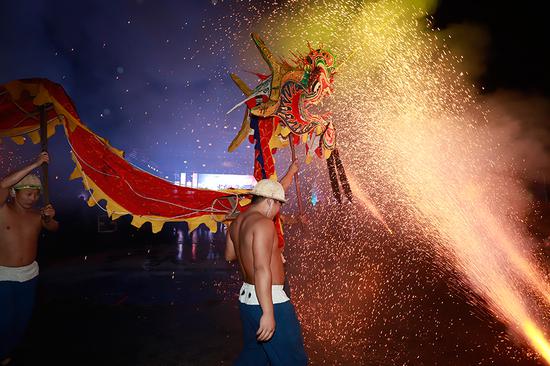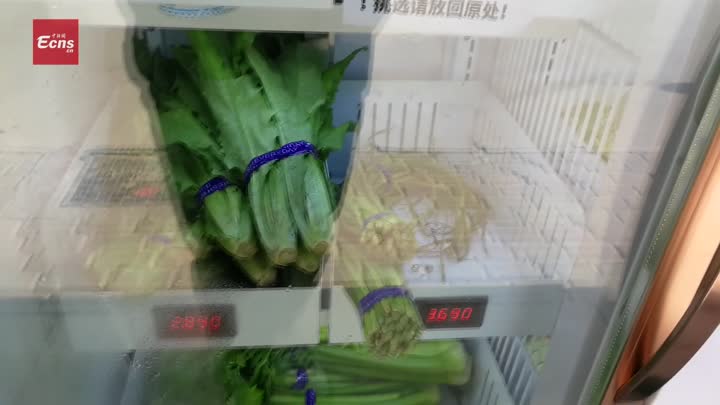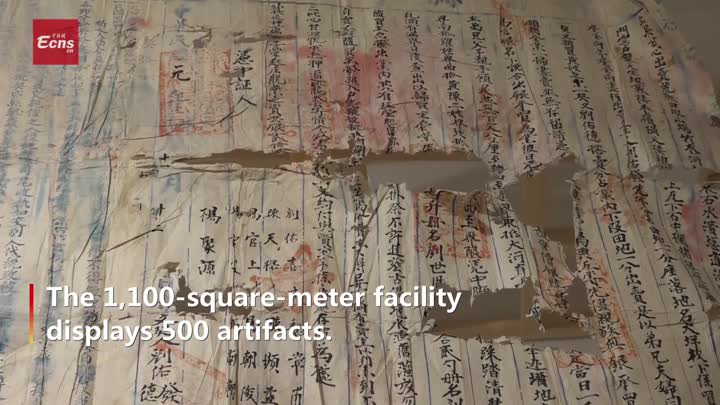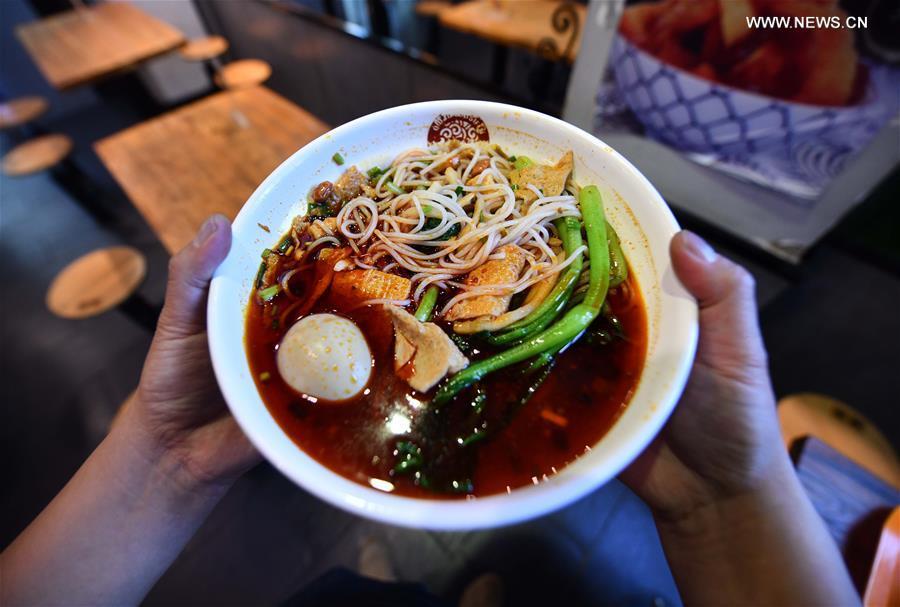
A bowl of river snail rice noodle is served at a restaurant in Liuzhou, south China's Guangxi Zhuang Autonomous Region, Jan. 2, 2020. Combining traditional food materials of the Han people with Miao and Dong ethnic groups, river snail rice noodles, or "Luosifen" in Chinese, is a dish of rice noodles boiled with pickled bamboo shoots, dried turnip, fresh vegetables and peanuts in spiced river snail soup. The specialty, whose creation was listed as part of Guangxi's intangible cultural heritage in 2008, has become one of the most sought-after dishes after the hit documentary A Bite of China mentioned it in 2012. River snail rice noodles give the city a new way out as the number of instant river snail rice noodle manufacturers has been mushrooming and the online market has been expanding. The government of Liuzhou has been boosting a series of industries related to river snail rice noodle. The promotion of river snail rice noodles benefits the impoverished households in Liuzhou as the output value of the industry has reached six billion yuan (860 million U.S. dollars) per year. (Xinhua/Huang Xiaobang)
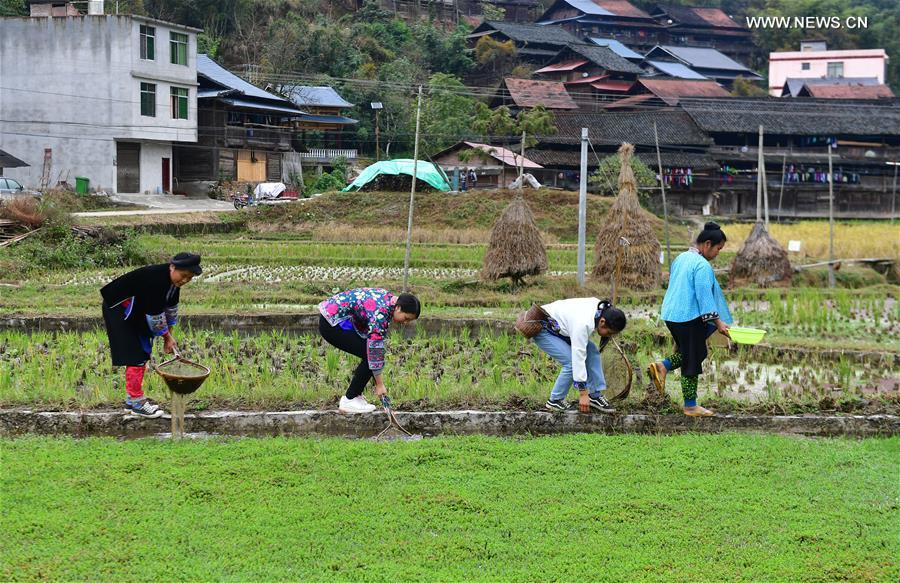
Photo taken on Nov. 17, 2018 shows villagers collecting river snails for making river snail rice noodle in Longling Village of Rongshui Miao Autonomous County of Liuzhou, south China's Guangxi Zhuang Autonomous Region. Combining traditional food materials of the Han people with Miao and Dong ethnic groups, river snail rice noodles, or "Luosifen" in Chinese, is a dish of rice noodles boiled with pickled bamboo shoots, dried turnip, fresh vegetables and peanuts in spiced river snail soup. The specialty, whose creation was listed as part of Guangxi's intangible cultural heritage in 2008, has become one of the most sought-after dishes after the hit documentary A Bite of China mentioned it in 2012. River snail rice noodles give the city a new way out as the number of instant river snail rice noodle manufacturers has been mushrooming and the online market has been expanding. The government of Liuzhou has been boosting a series of industries related to river snail rice noodle. The promotion of river snail rice noodles benefits the impoverished households in Liuzhou as the output value of the industry has reached six billion yuan (860 million U.S. dollars) per year. (Xinhua/Huang Xiaobang)

Workers pack instant river snail rice noodles at a factory in Liuzhou, south China's Guangxi Zhuang Autonomous Region, Jan. 2, 2020. Combining traditional food materials of the Han people with Miao and Dong ethnic groups, river snail rice noodles, or "Luosifen" in Chinese, is a dish of rice noodles boiled with pickled bamboo shoots, dried turnip, fresh vegetables and peanuts in spiced river snail soup. The specialty, whose creation was listed as part of Guangxi's intangible cultural heritage in 2008, has become one of the most sought-after dishes after the hit documentary A Bite of China mentioned it in 2012. River snail rice noodles give the city a new way out as the number of instant river snail rice noodle manufacturers has been mushrooming and the online market has been expanding. The government of Liuzhou has been boosting a series of industries related to river snail rice noodle. The promotion of river snail rice noodles benefits the impoverished households in Liuzhou as the output value of the industry has reached six billion yuan (860 million U.S. dollars) per year. (Xinhua/Huang Xiaobang)
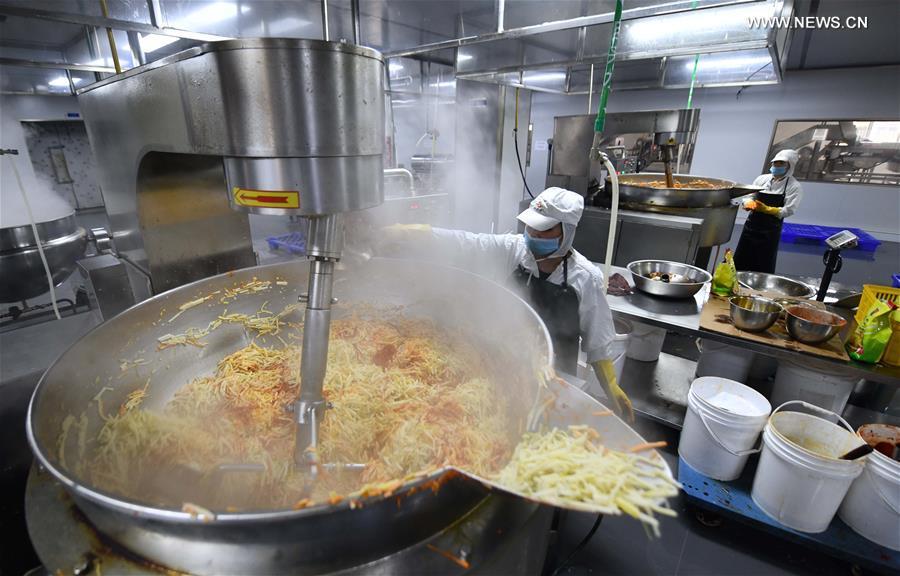
Workers process pickled bamboo shoots, an indispensable ingredient of the rice noodle, at a factory in Liuzhou, south China's Guangxi Zhuang Autonomous Region, Jan. 2, 2020. Combining traditional food materials of the Han people with Miao and Dong ethnic groups, river snail rice noodles, or "Luosifen" in Chinese, is a dish of rice noodles boiled with pickled bamboo shoots, dried turnip, fresh vegetables and peanuts in spiced river snail soup. The specialty, whose creation was listed as part of Guangxi's intangible cultural heritage in 2008, has become one of the most sought-after dishes after the hit documentary A Bite of China mentioned it in 2012. River snail rice noodles give the city a new way out as the number of instant river snail rice noodle manufacturers has been mushrooming and the online market has been expanding. The government of Liuzhou has been boosting a series of industries related to river snail rice noodle. The promotion of river snail rice noodles benefits the impoverished households in Liuzhou as the output value of the industry has reached six billion yuan (860 million U.S. dollars) per year. (Xinhua/Huang Xiaobang)
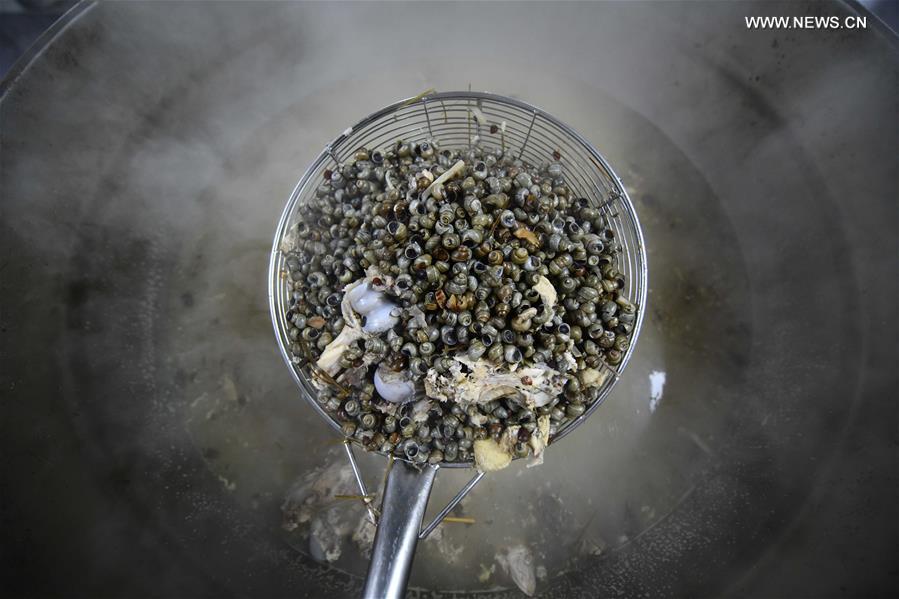
River snail rice noodle soup is boiled at a river snail rice noodles manufacturer in Liuzhou, south China's Guangxi Zhuang Autonomous Region, Jan. 2, 2020. Combining traditional food materials of the Han people with Miao and Dong ethnic groups, river snail rice noodles, or "Luosifen" in Chinese, is a dish of rice noodles boiled with pickled bamboo shoots, dried turnip, fresh vegetables and peanuts in spiced river snail soup. The specialty, whose creation was listed as part of Guangxi's intangible cultural heritage in 2008, has become one of the most sought-after dishes after the hit documentary A Bite of China mentioned it in 2012. River snail rice noodles give the city a new way out as the number of instant river snail rice noodle manufacturers has been mushrooming and the online market has been expanding. The government of Liuzhou has been boosting a series of industries related to river snail rice noodle. The promotion of river snail rice noodles benefits the impoverished households in Liuzhou as the output value of the industry has reached six billion yuan (860 million U.S. dollars) per year. (Xinhua/Huang Xiaobang)

People eat river snail rice noodles at a restaurant in Liuzhou, south China's Guangxi Zhuang Autonomous Region, Jan. 2, 2020. Combining traditional food materials of the Han people with Miao and Dong ethnic groups, river snail rice noodles, or "Luosifen" in Chinese, is a dish of rice noodles boiled with pickled bamboo shoots, dried turnip, fresh vegetables and peanuts in spiced river snail soup. The specialty, whose creation was listed as part of Guangxi's intangible cultural heritage in 2008, has become one of the most sought-after dishes after the hit documentary A Bite of China mentioned it in 2012. River snail rice noodles give the city a new way out as the number of instant river snail rice noodle manufacturers has been mushrooming and the online market has been expanding. The government of Liuzhou has been boosting a series of industries related to river snail rice noodle. The promotion of river snail rice noodles benefits the impoverished households in Liuzhou as the output value of the industry has reached six billion yuan (860 million U.S. dollars) per year. (Xinhua/Huang Xiaobang)
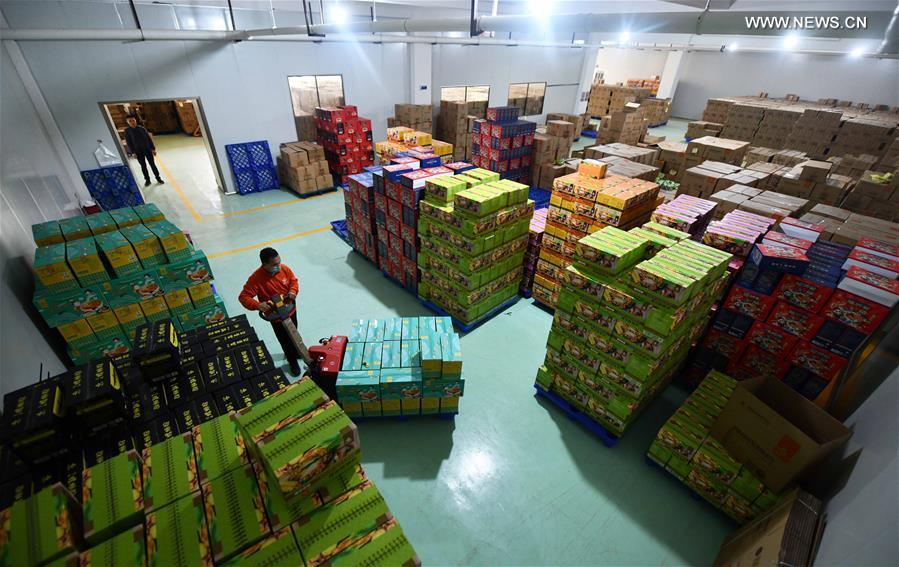
A worker stores packed river snail rice noodles at a factory in Liuzhou, south China's Guangxi Zhuang Autonomous Region, Jan. 2, 2020. Combining traditional food materials of the Han people with Miao and Dong ethnic groups, river snail rice noodles, or "Luosifen" in Chinese, is a dish of rice noodles boiled with pickled bamboo shoots, dried turnip, fresh vegetables and peanuts in spiced river snail soup. The specialty, whose creation was listed as part of Guangxi's intangible cultural heritage in 2008, has become one of the most sought-after dishes after the hit documentary A Bite of China mentioned it in 2012. River snail rice noodles give the city a new way out as the number of instant river snail rice noodle manufacturers has been mushrooming and the online market has been expanding. The government of Liuzhou has been boosting a series of industries related to river snail rice noodle. The promotion of river snail rice noodles benefits the impoverished households in Liuzhou as the output value of the industry has reached six billion yuan (860 million U.S. dollars) per year. (Xinhua/Huang Xiaobang)










